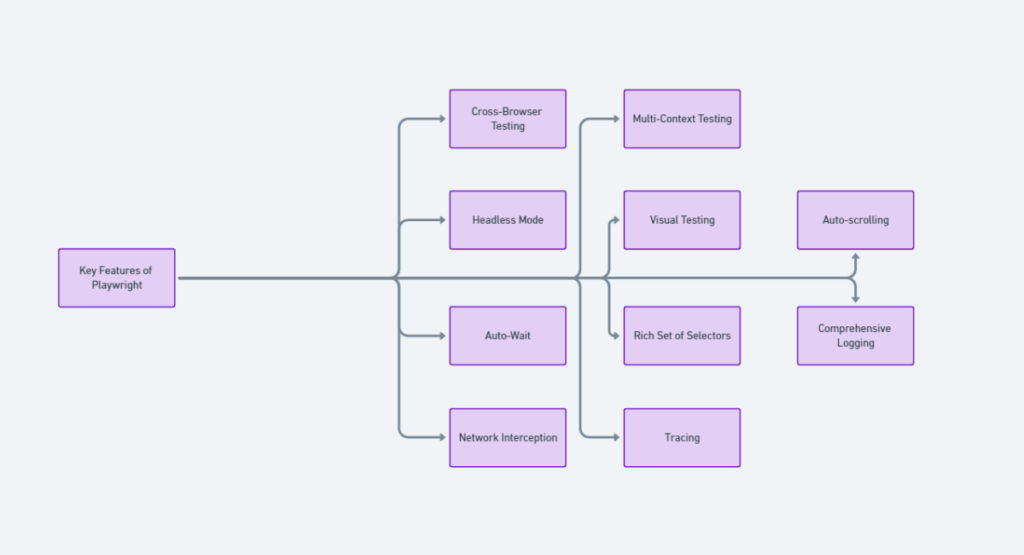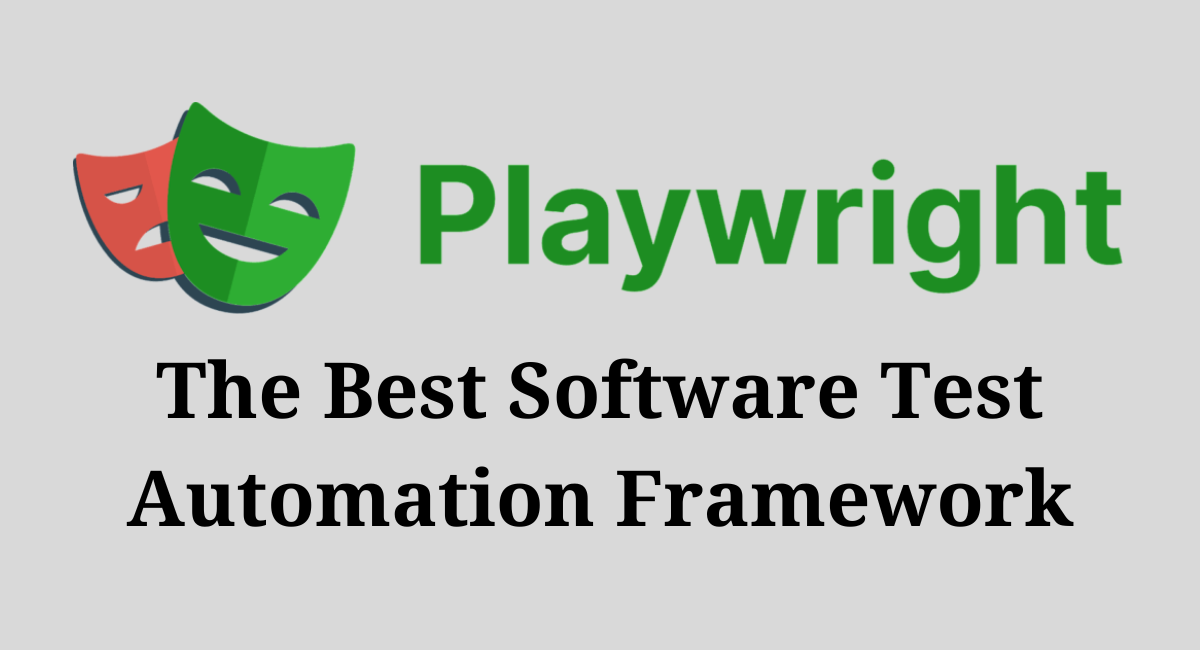
Playwright is an open-source automation library developed by Microsoft, designed for testing web applications across all modern web browsers.
It's built to enable end-to-end testing, ensuring that developers and testers can simulate real-world user scenarios with ease. Playwright supports testing across Chrome, Firefox, Safari, and even WebKit, offering a cross-browser testing solution right out of the box.
One of the standout features of Playwright is its ability to handle modern web applications' complexities, including single-page applications (SPAs), web components, and shadow DOM.
This makes it a particularly useful tool for testing applications built with modern JavaScript frameworks like React, Vue, and Angular.
Playwright's API is designed to be intuitive and powerful, allowing for the automation of interactions with web elements, network requests, and even browser contexts.
This means testers can automate scenarios that involve logging into applications, interacting with complex UIs, and verifying the outcomes, all within isolated browser contexts to ensure clean test states.
Key Features of Playwright:

- Cross-Browser Testing: Test on Chromium, Firefox, and WebKit with a single API.
- Headless Mode: Run browsers in headless mode for faster execution of tests.
- Auto-Wait: Automatically waits for elements to be ready before executing actions, reducing flakiness.
- Network Interception: Mock network requests to test application behavior in various scenarios.
- Multi-Context Testing: Simulate scenarios for multiple users in parallel without interference.
- Visual Testing: Support for screenshot testing to catch UI regressions.
- Rich Set of Selectors: Use CSS, XPath, or text selectors to interact with elements.
- Tracing: An invaluable feature for debugging, tracing captures automated screenshots and videos for each step of the test execution. This not only aids in identifying issues when tests fail but also provides a visual understanding of the test flow, making it easier to pinpoint where things went wrong without sifting through logs.
- Auto-scrolling: It intelligently handles elements that are not immediately visible by auto-scrolling them, further reducing the complexity of test scripts.
- Comprehensive Logging: With detailed logs that include selectors used, wait times, and the outcome of each action, it offers an exhaustive audit trail that simplifies debugging.
Getting Started with Playwright:
To start with it, you need Node.js installed on your machine. Once Node.js is set up, you can install Playwright using npm:
npm i -D @playwright/testAfter installation, you can create your first test script:
const { test, expect } = require('@playwright/test');
test('example test', async ({ page }) => {
await page.goto('https://example.com');
const title = await page.title();
expect(title).toBe('Example Domain');
});This simple test navigates to "example.com" and checks that the page title is "Example Domain."
Writing Effective Tests:
- Use Descriptive Test Names: Clearly describe what your test is doing, making it easier to understand at a glance.
- Keep Tests Independent: Each test should set up its state and clean up after itself, ensuring tests can run in parallel without affecting each other.
- Utilize Page Objects: Encapsulate page-specific selectors and actions within page objects to make tests more maintainable.
- Implement CI/CD Integration: Integrate your Playwright tests into your CI/CD pipeline to automatically run tests on code changes.
- Leverage Parallel Test Execution: Take advantage of Playwright's support for parallel test execution to speed up your test suite.
Conclusion:
Playwright is a powerful tool for automated web testing, offering a wide range of features to handle the complexity of modern web applications.
Its intuitive API and cross-browser support make it an excellent choice for developers and testers looking to enhance their testing strategy.
By following best practices and leveraging Playwright's capabilities, teams can improve their web application's quality and reliability, ensuring a seamless user experience across all browsers.
If you are looking for a test automation solution, without writing a single line of code then try ContextQA.
Whether you're new to automated testing or an experienced tester looking to switch to a new framework, it offers the tools and flexibility needed to tackle today's web testing challenges.
Start experimenting with Playwright today to see how it can transform your testing workflow.
Book a Demo and experience ContextQA testing tool in action with a complimentary, no-obligation session tailored to your business needs.
Benefits of using ContextQA
- Increased Efficiency: Automate repetitive testing tasks to save time and resources.
- Improved Quality: Catch more bugs and regressions with comprehensive test coverage.
- Reduced Costs: Eliminate the need for manual testing, leading to cost savings.
- Faster Time to Market: Deliver high-quality software faster with efficient testing.
- Enhanced Team Collaboration: Improve communication and collaboration among testers and developers.
We make it easy to get started with the ContextQA tool: Start Free Trial.
